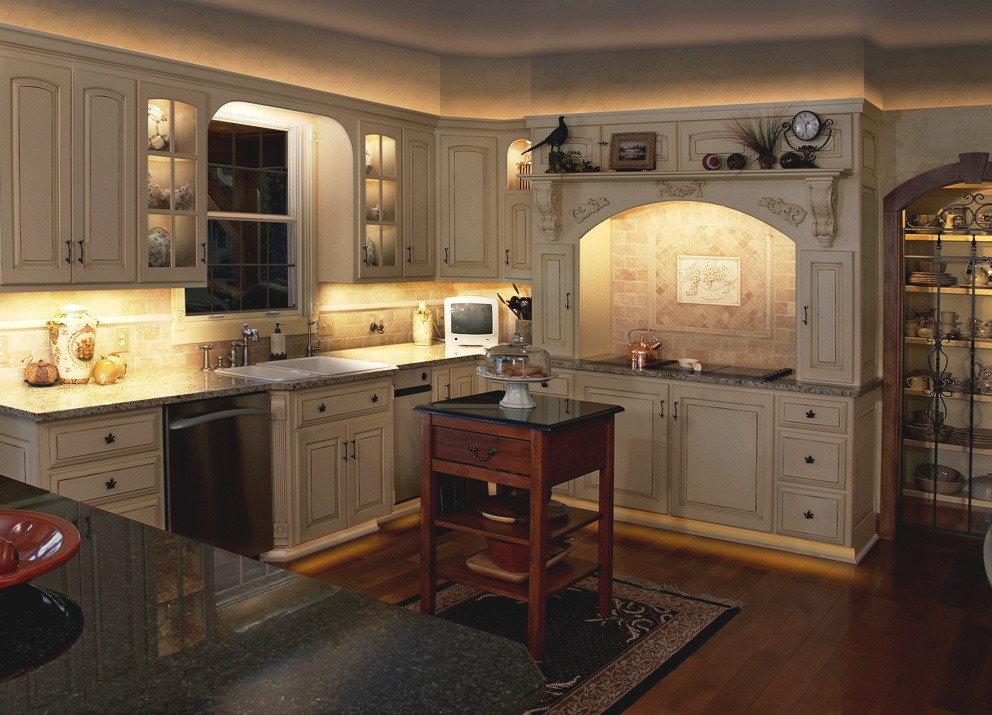To say LED lighting will significantly impact residential lighting design risks understatement. It is already overtaking business and commercial buildouts. More architects and designers specifying LED for the residential market, especially as the styles of bulbs proliferate.
Developed 50 years ago, LED lighting saw a dramatic pickup in commercial use as property management companies looked to lower costs for commercial buildings.

LED prices are expected to decrease over the next few years, especially with the announcement from global home furniture retailer, IKEA, that its lighting business will go all-LED by 2016.
Decorative lighting is playing an increasing role in home design with task or accent lights that help accentuate features of the room, furniture or cabinets. Lighting comes in ultra compact spot or strip fixtures (Nora's shown above), easy to install, even for non-electricians. Outwater Plastics' ceiling moulding has LED lights pre-embedded. Placement of the power source, the "driver," is the starting point, says cabinetmaker Jared Patchin.
"First, plug the LED driver into an outlet that is hidden, like on top of the cabinetry," Patchin explains. "Next, plug in all the different lights that will be run off that driver (typically up to six ports), and lastly, plug in any of the switches, which include motion detectors, dimmers, and sensors, and you're done."





